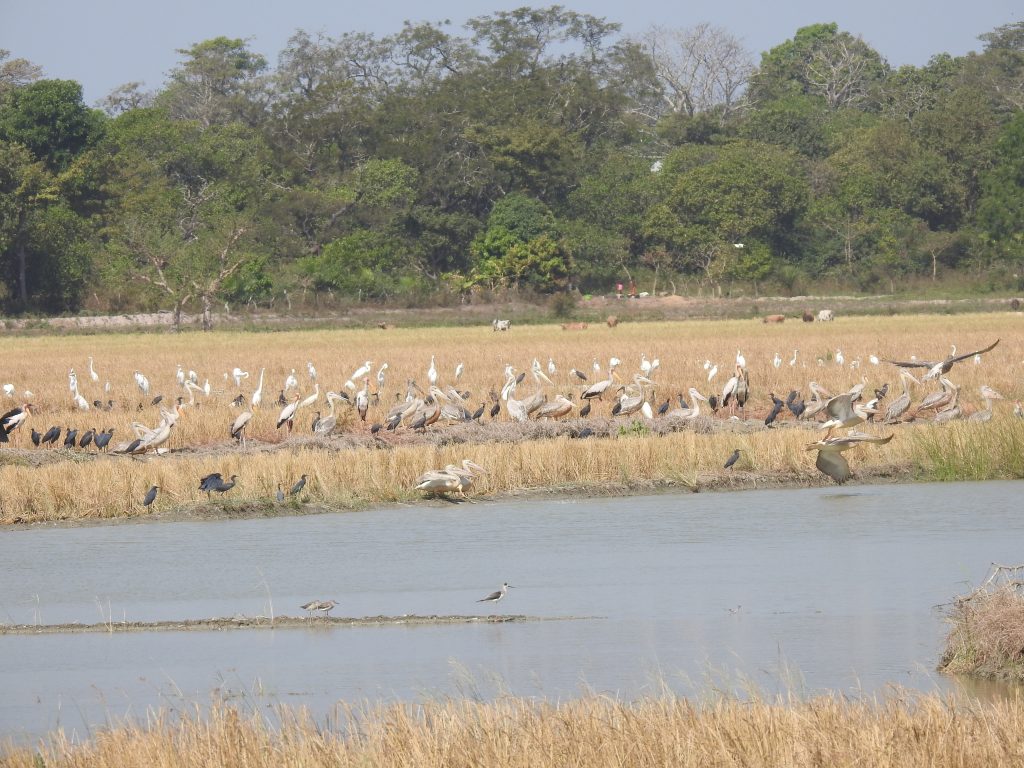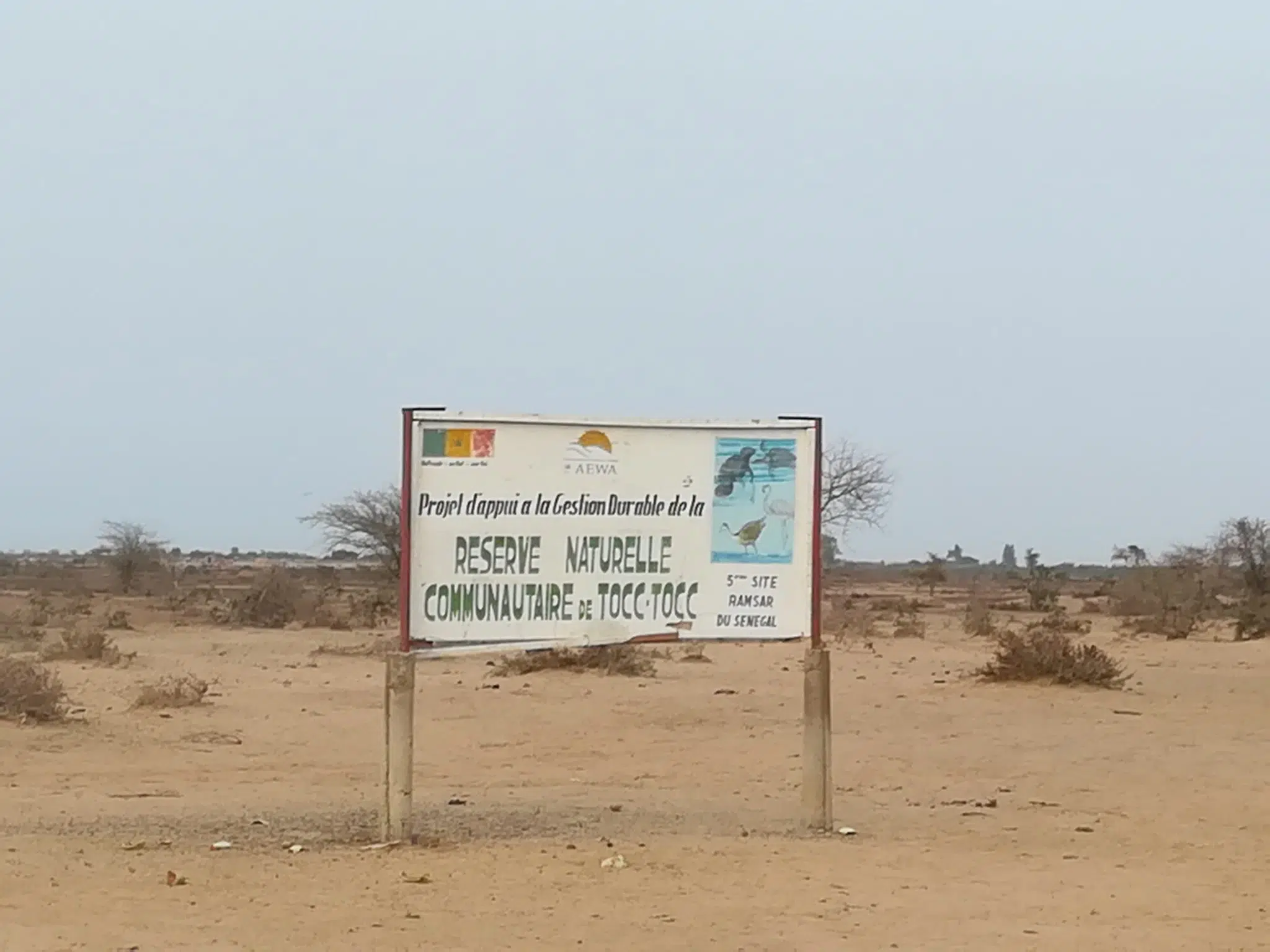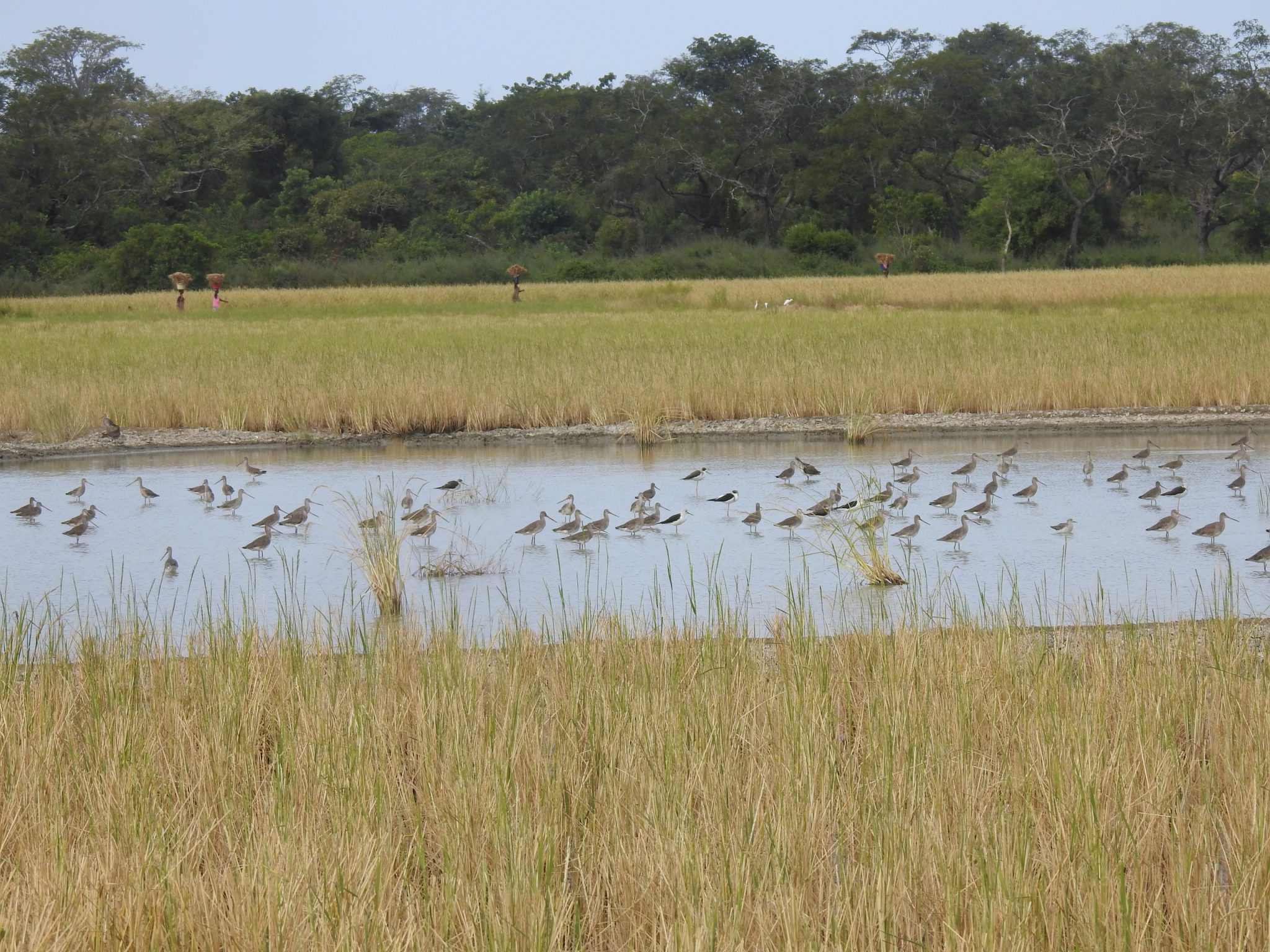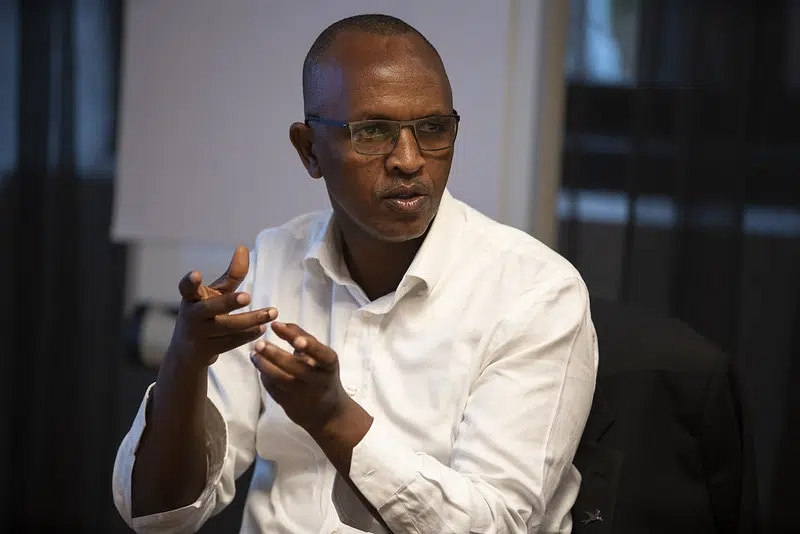Empowering Communities to Safeguard Migratory Bird Havens in Africa

Since 2020 the EAFI Small Grants Program has empowered local communities protect vital bird habitats.
Each spring, an awe-inspiring natural spectacle unfolds across the East Atlantic Flyway – a pivotal aerial highway stretching from the icy Arctic down the western flanks of Europe and Africa, spanning 49 countries. Millions of shorebirds and waterbirds, depart their southern wintering grounds and embark upon one of the most extraordinary migrations on earth.
Fuelled by ineffable biological impulses, these feathered voyagers undertake a breathtaking journey along tried and tested routes. Against the background of this spectacular migration, these birds face various perils along the way including habitat destruction caused by agriculture expansion and intensification, urbanisation, energy production, hunting and trapping as well as pollution among others.
Acknowledging these challenges BirdLife partners established the East Atlantic Flyways Initiative (EAFI) in 2015. EAFI aims to improve species status by identifying priorities, strengthening partner capacity, and implementing a local-to-global conservation approach through a partner-led enterprise spanning the flyway.
In 2020 the EAFI Small Grants Program was established by the Task Force supported by Vogelbescherming Nederland (VBN), the Dutch BirdLife Partner. The program aims at empowering grassroots efforts to protect vital habitats across the flyway. EAFI grants have catalysed remarkable successes in just a few years by supporting local partners with small grants of € 15,000 per organisation in Morocco, Senegal, Guinea-Bissau, Cote d’Ivoire, Nigeria and South Africa.
“The EAFI small grants have proven transformative for migratory bird conservation by investing in on-the-ground efforts tailored to each region’s challenges. From monitoring and research to livelihood projects and environmental education, these seed funds empower local stakeholders to lead their own solutions,” notes Jaime Garcia Moreno, International Coordinator of the EAFI program at VBN.
In Nigeria, the fund enabled the Nigerian Conservation Foundation (NCF) to carry out waterbird monitoring, including an extensive survey of the entire Nigerian coast in January 2022 and identifying additional sites that required monitoring. During the monitoring, 2871 individual waterbirds belonging to 55 species and 16 families were recorded.
‘‘The most important stakeholders in the conservation of the biodiversity in the coastal areas are the local communities whose actions alter the state of these species and habitat’’ stated Stella Egbe, Senior Conservation Manager at NCF.
In Senegal’s 273 ha Tocc Tocc Community Nature Reserve, a Ramsar site, critical for migratory birds, EAFI’s investments in 2022 allowed 30 community members to construct ecotourism infrastructure, provided means to monitor across the lagoon using a boat, and ramp up advocacy for habitat preservation and it indirectly impacted 1212 people at the site. The community has benefited significantly from the distribution of seeds and agricultural inputs. Further, 13 beneficiaries received seeds and inputs for cultivating crops such as chilli peppers, onions, eggplants, cabbages, carrots, and watermelons. Additionally, four beneficiaries engaged in rice cultivation. These initiatives have contributed to enhancing food security, diversifying income sources, and promoting sustainable agricultural practices within the community.
“The support we received has been very beneficial in the food security, promoting sustainable agricultural practices, which provide us with selling of vegetables to generate income,” explains Aida Boh, president of the Women Group Sope Naby in the village of Pakh, located in the reserve.

In Guinea-Bissau’s biodiverse Mansôa Basin, a Key Biodiversity Area (KBA), and critical site for waterbirds, EAFI funding enabled first the monitoring of Black-tailed Godwit (Limosa limosa) and Black-Crowned Crane (Balearica Pavonina) despite the expansion of rice field and use of fertilisers- underscoring the area’s critical importance. Through the small grant program support, ODZH is producing the first recommendations to manage this area.
“These migratory species face existential perils at every turn of their nonstop odysseys, but their incredible resilience and determination rekindle our own – we simply must rise to be equally tenacious in fighting to keep their aerial highways open and their oasis layovers protected”, says Francisco Wambar, ODZH’s Chief Executive Officer.

The forests and mangrove isles of Côte d’Ivoire’s 550 ha Ehotilé Islands National Park, a Ramsar site provide a lifeline for winged wanderers like the Eurasian curlew – yet had remained understudied. Through EAFI funding 26 local citizen scientists were trained. The citizen scientists were instrumental in documenting over 30 bird species in need of protection at the site.
“Migratory birds at the site are faced with various threats including urbanization and poaching. We are now in the process of developing conservation plans for the threatened species”, notes Narcisse Tehe, SOS-Forêts Project lead.
Conservation efforts can only truly endure if local stakeholders are vested in the cause through environmental education, sustainable livelihoods, and ownership over the process. “They must be equipped with tools for their future while developing pride about being guardians of their natural heritage. Only then can we forge an unbreakable cherishing for these avian critical passages” notes Amara Koffee, member of the Ehotile National Park ornithologists committee.

In Morocco, researchers from GREPOM are spearheading the development of a national shorebird action plan to enact targeted policies safeguarding havens like the 3600-hectare Bas Loukkos marshes in northwest Morocco. The marshes listed as a Ramsar site, hosts thousands of godwits annually during migration from Europe.
In South Africa, BirdLife partner BirdLife South Africa worked with municipal authorities to revise recreational use bylaws and establish “no wake” zones in areas where boat wakes were undercutting the estuary banks. Signage demarcating these zones and other sensitive erosion areas was erected throughout the estuary. An important focus was training Over 40 residents and work crews in habitat restoration and monitoring techniques.
“We recognize the vital role of local communities and organizations in protecting migratory birds along the flyway. This dedicated EAFI Small Grants Fund will empower them to take ownership and implement priority actions outlined in our strategy 2023-2032”, notes Geoffroy Citegetse, EAFI Manager at BirdLife International.
The small grant will support various activities, including habitat restoration, community-based monitoring, awareness campaigns, and capacity-building initiatives. EAFI aims to foster a bottom-up approach to conservation by providing flexible funding directly to grassroots initiatives, leveraging the local knowledge and commitment of those living along the flyway.
“We want to ensure that our strategy is not just a document on a shelf, but a living, breathing effort that translates into tangible results. These small grants will be a catalyst for change, enabling communities to lead the way in safeguarding the incredible migratory species that rely on the East Atlantic Flyway “, adds Moreno.
“With a strong emphasis on collaboration and capacity-building, the small grants fund will also facilitate knowledge-sharing and best practice exchange among grantees, creating a ripple effect of conservation impact across the region”, concludes Citegetse.
Header photo: Waterbirds in Cussana-Cussenthe, Guinea Bissau © ODZH

“This dedicated EAFI Small Grants Fund will empower them to take ownership and implement priority actions outlined in our strategy 2023-2032.”
Geoffroy Citegetse, EAFI Manager at BirdLife International